Dunhuang murals shed light on ancient New Year celebrations
The Mogao Grottoes in Dunhuang have long been considered a treasure trove of cultural heritage. The murals adorning the walls of the grottoes record rich scenes of ancient life, including how ancient people celebrated New Year.
Mogao Cave 236- Throwing a banquet
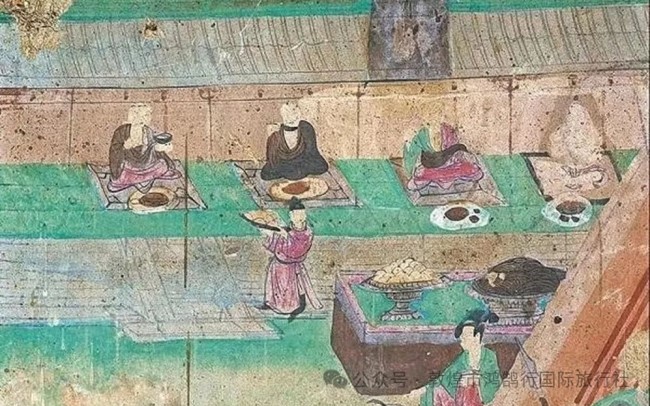
In the Tang Dynasty (618-907), the Dunhuang-style banquets often include individual servings of steamed cake, soup cake, ring cake and wine. The decanter is also marked in the picture.
Mogao Cave 61-Preparing wheaten dishes
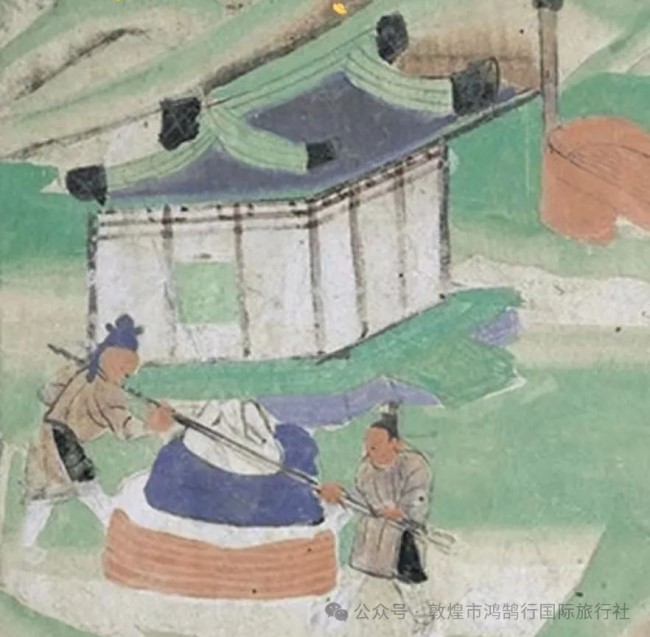
A long time ago, the Dunhuang people grew millet and yellow rice as staples. The advent of wheat, originating from Central Asia and disseminated eastward along the Silk Road, revolutionized their agricultural practices.
Gradually, wheat supplanted other crops to become the primary crop of the region. This transition was vividly depicted in the Dunhuang murals, which feature a plethora of cooked wheaten dishes.
Mogao Grottoes Cave 296- Having a barbecue
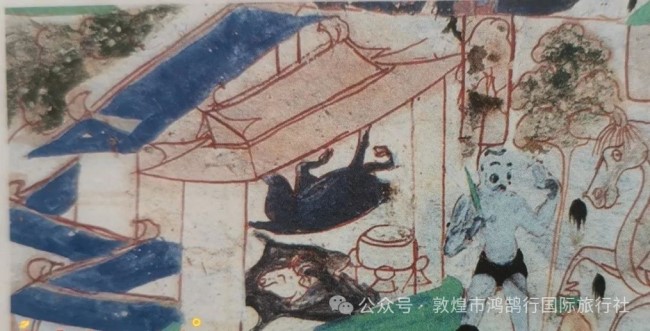
The pastoral landscapes surrounding Dunhuang yield an abundance of delectable meat, with beef and mutton reigning as the favored choices among locals.
Historical records from Dunhuang chronicle the lively scenes of revelry, where people gather to sing and dance in celebration while partaking in succulent mutton dishes on the occasion of the first day of the lunar New Year.
Mogao Grottoes Cave 156-Stomping and dancing

Stomping and dancing, or "tage" in Chinese, is a time-honored form of singing and dancing which spread throughout China in ancient times.
In the mural, eight skilled dancers grace the scene, elegantly waving their long sleeves as they execute precise footwork, seamlessly dancing as they move.
Yulin Grottoes Cave 25- Appreciating waist-drum dance
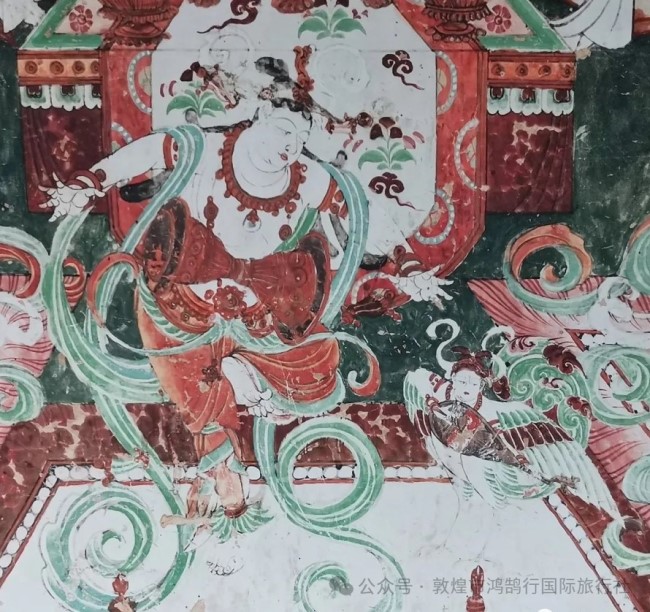
The mural captures a most famous and flexible waist drum performer in Dunhuang. With arms outstretched, she skillfully strikes the large drum in front of her abdomen using the fleshy palms of her hands.
One of her legs is raised in a high cross, with the big toe elegantly lifted. Meanwhile, long streamers whirl around her at dizzying speeds, imbuing her entire being with a sense of strength and dynamic gracefulness.
Mogao Grottoes Cave 220-Performing huxuan dance

In the mural, the huxuan dance is handled with four dancers positioned centrally, accompanied by 18 musicians flanking them on either side.
Amidst this ensemble, four lighting technicians are portrayed arranging candles atop luminous wheels, while a towering light tower looms behind the stage, adding to the spectacle.
Mogao Grottoes Cave 61-Watching acrobatic performances
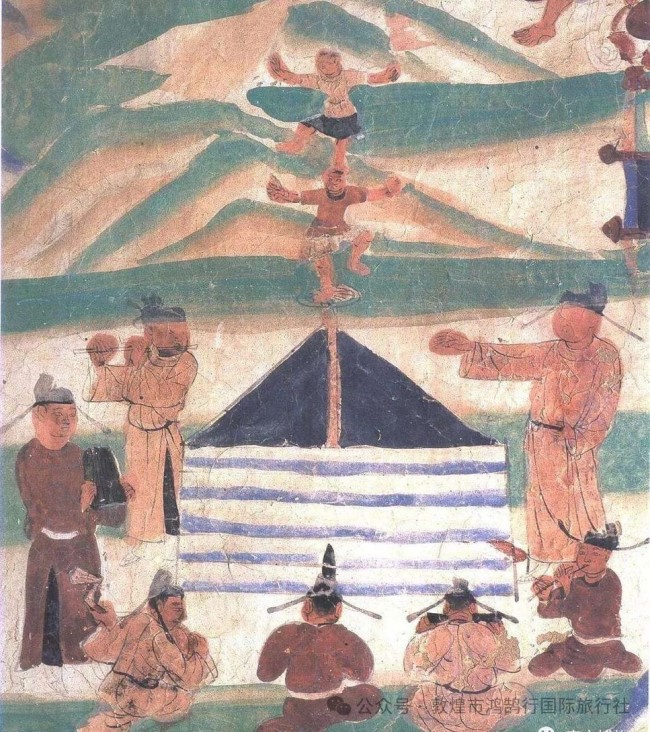
In addition to singing and dancing, people also like to watch acrobatic performances on special occasions. In ancient times, these spectacles were collectively known as "Baixi" (a hundred plays), encompassing a wide array of entertainment.
While the passage of time has brought change, many customs observed by modern individuals during Spring Festival remain similar to those depicted in the Dunhuang murals.
People still place emphasis on familial gatherings, adorning their surroundings with lanterns, and engaging in the joyous traditions of singing and dancing. Ultimately, the essence of the celebration persists in the values of family reunion, bestowing blessings, and celebrating the inherent joys of life.





 Print
Print Mail
Mail
